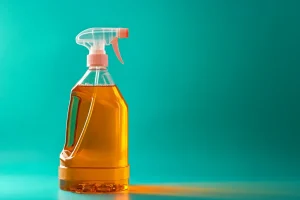I. Introduction: What Makes a Cleaner “Alkaline”?
Ever wondered what makes certain cleaners so effective against greasy, grimy messes? Often, the secret lies in their alkalinity. These cleaners are the workhorses of the cleaning world, capable of tackling tough organic soils that others leave behind.
This guide dives into the world of alkaline cleaners – explaining what they are, how their unique chemistry allows them to work, the different types you might encounter, and how to use them safely and effectively for a truly deep clean. Understanding the science behind these products helps in choosing the right tool for the job and handling it with the necessary care.
Contact us!
The pH Scale Explained
To understand alkaline cleaners, it’s essential first to grasp the concept of the pH scale. This scale measures how acidic or alkaline a water-based solution is, ranging from 1 to 14.
- Neutral: A pH of 7 is considered neutral. Pure water sits right here.
- Acidic: Solutions with a pH below 7 (from 1 to 6) are acidic. They contain more hydrogen ions (H+). Think lemon juice or vinegar.
- Alkaline (or Basic): Solutions with a pH above 7 (from 8 to 14) are alkaline. They contain more hydroxide ions (OH−). Examples range from baking soda to lye.
This foundational knowledge helps categorize cleaning products and understand their specific purposes.
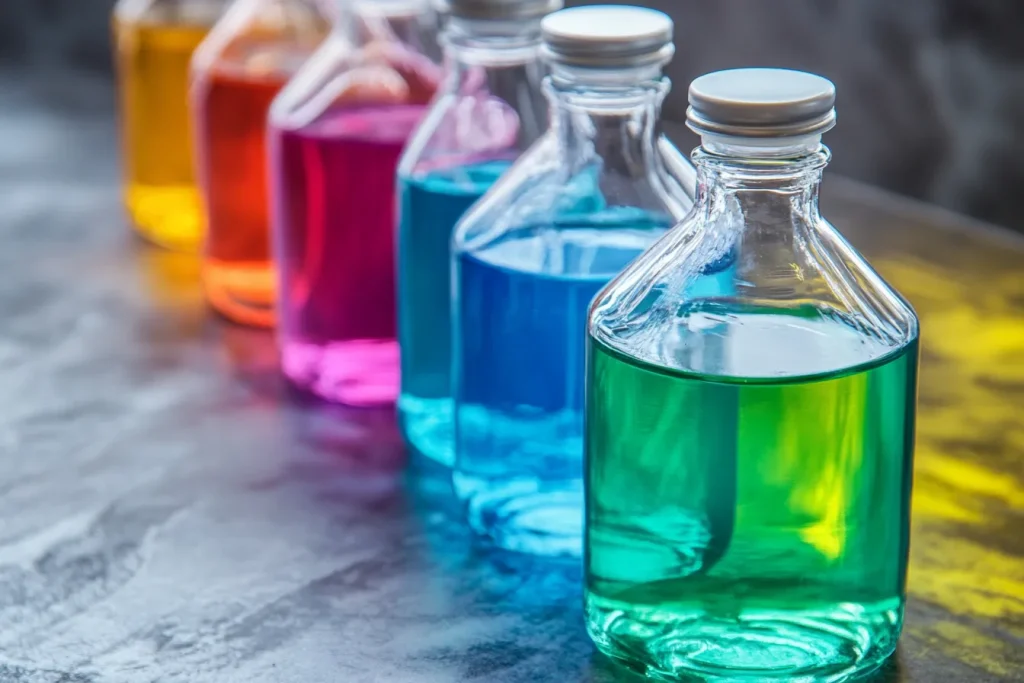
Defining Alkaline Cleaners
Simply put, alkaline cleaners are cleaning agents formulated to have a pH value greater than 7. Their position on the upper end of the pH scale dictates their strength, which can range significantly:
- Mild Alkalies: pH roughly 8 to 9.5
- Moderate Alkalies: pH roughly 9.5 to 11
- Strong Alkalies: pH roughly 11 to 12.5
- Very Strong Alkalies: pH roughly 13 to 14
Why Alkalinity Matters for Cleaning
The higher pH of alkaline cleaners is not just a number; it’s the key to their cleaning power, particularly against organic soils. The abundance of hydroxide ions (OH−) in alkaline solutions gives them the chemical ability to react with and break down substances like fats, oils, grease, proteins, and general grime commonly found in kitchens, workshops, and laundry. This chemical reactivity is what makes them so effective where neutral or acidic cleaners might struggle. The specific chemical nature of alkaline substances directly enables their function – they are chemically equipped to tackle acidic and organic soils through reactions facilitated by their hydroxide ions.
II. The Science Behind the Sparkle: How Alkaline Cleaners Tackle Grime
Alkaline cleaners don’t just wipe away dirt; they chemically transform it, breaking it down into forms that are easier to lift and rinse away. This transformation happens through several key chemical processes, with saponification and emulsification being two of the most important. Understanding these mechanisms reveals how these cleaners achieve such powerful results.
Turning Grease into Soap: The Magic of Saponification
One of the most fascinating actions of strong alkaline cleaners is saponification. This is the chemical reaction where an alkali, particularly a strong one like sodium hydroxide (NaOH, also known as lye or caustic soda) or potassium hydroxide (KOH, caustic potash), reacts directly with fats and oils (which are chemically known as triglycerides). The result of this reaction is glycerol and fatty acid salts – which are, essentially, soap.
Imagine tough, baked-on grease in an oven or a clog of fatty residue in a drain pipe. These substances are generally insoluble in water. Saponification converts these insoluble fats and oils into water-soluble soap molecules. Once transformed into soap, the grime that was stubbornly stuck to the surface can be easily lifted and rinsed away with water.
This is the same fundamental process used for centuries to make traditional bar soaps from animal fats or vegetable oils. The effectiveness of saponification is why products designed for heavy grease removal, like oven cleaners and many drain cleaners, often rely on strong alkaline ingredients.
Breaking Down and Lifting Dirt: Understanding Emulsification
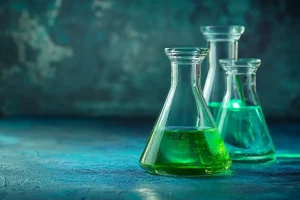 Not all alkaline cleaning relies on the dramatic transformation of saponification. Another crucial process is emulsification. This is the mechanism by which fats and oils are broken down into microscopic droplets and suspended within the cleaning solution (usually water). Think of it like making a salad vinaigrette – oil and vinegar (water-based) don’t mix naturally, but shaking them vigorously breaks the oil into tiny droplets dispersed in the vinegar, at least temporarily.
Not all alkaline cleaning relies on the dramatic transformation of saponification. Another crucial process is emulsification. This is the mechanism by which fats and oils are broken down into microscopic droplets and suspended within the cleaning solution (usually water). Think of it like making a salad vinaigrette – oil and vinegar (water-based) don’t mix naturally, but shaking them vigorously breaks the oil into tiny droplets dispersed in the vinegar, at least temporarily.
Many alkaline cleaning formulations contain ingredients called surfactants (surface-active agents) that act as emulsifiers. Surfactant molecules have a unique structure: one end is attracted to water (hydrophilic, or water-loving) and the other end is attracted to oil and grease (hydrophobic, or water-fearing). When applied to a greasy surface, the hydrophobic tails of the surfactant molecules embed themselves in the oil droplets, while the hydrophilic heads face outward into the water-based cleaning solution.
This forms a microscopic sphere around each oil droplet, effectively coating it and allowing it to be lifted from the surface and dispersed within the water. The emulsifier keeps these tiny droplets suspended, preventing them from clumping back together or redepositing onto the surface being cleaned. This process is key to how detergents and many all-purpose cleaners work to lift away greasy films and general grime, making thorough rinsing an essential final step to wash away the suspended dirt.
Other Ways Alkalies Help Clean
Beyond saponification and emulsification, alkaline cleaners employ other strategies to combat dirt:
- Detergency/Wetting: Alkaline cleaners often incorporate surfactants that act as wetting agents. These reduce the surface tension of water, allowing the cleaning solution to spread out more easily and penetrate into the soil and the pores of the surface being cleaned, making the removal process more efficient.
- Dispersion/Deflocculation: Some alkaline formulations include dispersing agents. These help break down solid soils into very fine particles and keep them suspended in the cleaning solution, preventing them from settling back onto the cleaned surface.
- Neutralization: The inherent alkalinity helps neutralize acidic components often found in soils (like fatty acids in grease), contributing to their breakdown and removal.
It’s important to recognize that alkaline cleaners rarely rely on just one mechanism. Effective cleaning often results from a synergistic combination of these processes working together. The base alkali might perform saponification on heavy fats, while added surfactants handle emulsification of lighter oils and improve wetting, and dispersing agents keep everything suspended for easy rinsing.
Furthermore, the dominant cleaning action can depend on the specific alkali used and the nature of the soil being tackled. Very strong bases like lye excel at saponifying thick grease and dissolving proteins , whereas milder alkaline products might lean more heavily on emulsification, often boosted by the inclusion of surfactants, for general-purpose cleaning.
III. Meet the Alkaline All-Stars: Common Ingredients in Your Cleaning Products
Alkaline cleaners come in various strengths, determined by their active ingredients. Let’s meet some of the most common players, from gentle helpers to industrial-strength powerhouses. Remember, stronger isn’t always better – the best choice depends on the cleaning task and the necessary safety precautions.
The Gentle Touch: Mild Alkalies (pH ~8-9.5)
- Sodium Bicarbonate (Baking Soda)
- Properties: A familiar household staple, sodium bicarbonate (NaHCO3) is mildly alkaline with a pH around 8.3 to 9. It also acts as a gentle abrasive and is known for its odor-absorbing capabilities.
- Uses: Commonly used as a laundry booster to soften clothes and enhance detergent performance, for light cleaning tasks, deodorizing refrigerators or carpets, creating mild scouring pastes for surfaces like sinks, and helping lift certain stains when applied as a paste.
- Safety: Generally considered non-toxic and safe for use on most surfaces, though its cleaning power is limited for heavy grease or tough, set-in stains.
Everyday Workhorses: Moderate Alkalies (pH ~9.5-11)
- Ammonia (Ammonium Hydroxide in solution)
- Properties: Household ammonia is typically a 5-10% solution of ammonia gas in water, forming ammonium hydroxide. It’s a moderate alkali with a pH around 11. It’s an effective grease cutter and evaporates quickly, which helps leave surfaces like glass streak-free.
- Uses: Found in many glass cleaners, all-purpose cleaners, floor cleaners, and some stain removers.
- Safety: Has a very pungent and irritating odor. It can irritate the eyes, skin, and respiratory tract. Good ventilation is essential when using ammonia-based products. Crucially, never mix ammonia with chlorine bleach, as this combination releases toxic chloramine gas.
- Borax (Sodium Borate / Sodium Tetraborate Decahydrate)
- Properties: Borax is a naturally occurring mineral compound, a salt of boric acid. It’s a moderate alkali with a solution pH around 9.2. It acts as a water softener, detergent booster, and has mild antiseptic, antifungal, and insecticidal properties.
- Uses: Often added to laundry detergents or used as a laundry booster, incorporated into multi-purpose cleaners, used for controlling mold and mildew, and sometimes found as an active ingredient in certain insecticides.
- Safety: While having low acute toxicity, borax should be handled with care. It is used as a pesticide and should be kept away from children and pets, and not ingested.
Heavy-Duty Helpers: Strong Alkalies (pH ~11-12.5)
- Sodium Carbonate (Washing Soda / Soda Ash)
- Properties: Chemically Na2CO3, washing soda is significantly more alkaline than its cousin, baking soda, with a pH around 11 to 11.4. It’s an excellent water softener and is very effective at cutting through grease and removing stubborn stains.
- Uses: A key ingredient in many laundry detergents (especially powders) and laundry boosters, particularly useful in areas with hard water. Also used for heavy-duty cleaning tasks, degreasing surfaces, removing soap scum build-up, and in homemade dishwasher tabs.
- Safety: More caustic than baking soda. It can cause skin and eye irritation, so wearing gloves is recommended during handling. It should not be used on aluminum surfaces as it can cause corrosion.
- Trisodium Phosphate (TSP)
- Properties: TSP (Na3PO4) is a powerful cleaning agent. A 1% solution has a pH of about 12, making it strongly alkaline. It’s highly effective as a cleaner, degreaser, and stain remover.
- Uses: Traditionally used for heavy-duty cleaning jobs like scrubbing concrete floors or driveways, preparing walls for painting (it cleans, degreases, and deglosses surfaces), and as a flux in soldering. It was once a common ingredient in detergents.
- Safety: TSP is an irritant; protective gloves and eyewear should be worn during use. Environmental Concern: Its use in consumer products has significantly declined because phosphates are major contributors to the eutrophication of lakes and rivers (excessive algae growth that harms aquatic life). Due to these environmental concerns, its sale and use are restricted in many regions.
- Sodium Metasilicate
- Properties: With the formula Na2SiO3, this compound forms strongly alkaline solutions (a 1% solution has a pH of about 12.7, reaching up to 13). It’s an effective cleaner, emulsifier, dispersant, and provides buffering capacity. It also acts as a corrosion inhibitor for some metals (though not aluminum) and is used as a detergent builder.
- Uses: Found in laundry detergents, automatic dishwasher detergents, industrial cleaning formulations, metal cleaners, concrete and cement applications, and in paper and textile processing.
- Safety: It is a strong irritant to the skin, eyes, and mucous membranes. Proper personal protective equipment (PPE) is necessary when handling it.
The Powerhouses: Very Strong Alkalies (pH ~13-14)
- Sodium Hydroxide (Lye / Caustic Soda)
- Properties: NaOH is one of the strongest and most common alkalies, with a pH that can reach 14. It is highly corrosive and exceptionally effective at saponifying fats and oils, and dissolving proteins (like hair). It generates significant heat when dissolved in water.
- Uses: A primary active ingredient in many drain cleaners (both solid and liquid forms), oven cleaners, used commercially for soap making, heavy industrial degreasing, and some paint strippers.
- Safety: EXTREME DANGER. Sodium hydroxide is extremely corrosive and can cause severe, deep chemical burns upon contact with skin or eyes, potentially leading to permanent damage or blindness. Inhalation of its dust or mist is harmful to the respiratory tract. Requires meticulous handling with heavy-duty PPE, including chemical-resistant gloves, splash-proof goggles, and potentially respiratory protection. It reacts violently with acids and generates heat rapidly when mixed with water – always add lye slowly to water, never the other way around. It also reacts with certain metals like aluminum, releasing flammable hydrogen gas. Store securely away from incompatible materials.
- Potassium Hydroxide (Caustic Potash)
- Properties: KOH is chemically very similar to NaOH, also a very strong alkali with a pH up to 14. It is highly corrosive and shares many properties with lye, though it’s often preferred for making liquid or softer soaps.
- Uses: Commonly used in the production of liquid soaps, found in some liquid drain cleaners, used as an electrolyte in alkaline batteries, and in paint and varnish removers and other industrial applications.
- Safety: EXTREME DANGER. Like NaOH, potassium hydroxide is highly corrosive and poses severe risks of burns to skin and eyes, and respiratory irritation. The same stringent safety precautions and PPE requirements apply as for sodium hydroxide.
The clear pattern emerging from these ingredients is a spectrum of risk versus reward. Higher pH values generally translate to greater power against tough organic soils like grease and proteins, largely due to enhanced saponification. However, this increased cleaning potency comes hand-in-hand with significantly higher corrosivity and greater safety hazards. Mild alkalies like baking soda offer safety but limited strength, while very strong alkalies like lye are formidable cleaners but demand extreme caution and respect.
Furthermore, the way an alkali is presented matters immensely. Its concentration and physical form (solid flakes/pellets versus a pre-dissolved liquid solution) drastically affect its properties and the associated hazards. Household ammonia, for instance, is a relatively dilute solution (5-10%), making it less dangerous than concentrated industrial forms.
Conversely, some drain cleaners contain lye at concentrations up to 50%, maximizing its clog-dissolving power but also its danger. Even the simple act of dissolving solid lye or caustic potash in water is hazardous due to the intense heat generated (an exothermic reaction), which can cause boiling and dangerous splashing – a risk not present with ready-made solutions, although the solutions themselves remain highly corrosive.
Quick Guide to Common Alkaline Cleaning Ingredients
| Ingredient Name | Common Name(s) | Strength Level | Typical pH Range | Common Cleaning Uses | Key Safety/Handling Notes |
|---|---|---|---|---|---|
| Sodium Bicarbonate | Baking Soda | Mild | 8.3 – 9 | Light cleaning, deodorizing, laundry booster, mild scouring paste | Generally non-toxic, safe for most surfaces. |
| Ammonia (solution) | Ammonium Hydroxide | Moderate | ~11 | Glass cleaner, all-purpose cleaner, floor cleaner, stain removal | Pungent odor, irritant (eyes, skin, respiratory). Use with good ventilation. Never mix with bleach. |
| Borax | Sodium Borate, Sodium Tetraborate | Moderate | ~9.2 | Laundry booster, multi-purpose cleaner, mold control, insecticide component | Low acute toxicity, handle with care, keep from children/pets. |
| Sodium Carbonate | Washing Soda, Soda Ash | Strong | 11 – 11.4 | Laundry detergent/booster (hard water), heavy-duty cleaning, degreasing, soap scum | Irritant (skin, eyes). Wear gloves. Avoid aluminum. |
| Trisodium Phosphate | TSP | Strong | ~12 (1% sol.) | Heavy-duty cleaning (concrete), paint prep (deglossing), flux | Irritant. Wear gloves/eye protection. Environmental concern (eutrophication), use restricted. |
| Sodium Metasilicate | – | Strong | 12.7 – 13 | Detergents (laundry, dishwasher), industrial/metal cleaning, builder, corrosion inhibitor | Strong irritant (skin, eyes, mucous membranes). Use PPE. |
| Sodium Hydroxide | Lye, Caustic Soda | Very Strong | 13 – 14 | Drain cleaner, oven cleaner, soap making, industrial degreasing | EXTREME DANGER. Highly corrosive, severe burns (skin/eyes). Use heavy-duty PPE. Reacts with water/acids/aluminum. Add slowly TO water. |
| Potassium Hydroxide | Caustic Potash | Very Strong | 13 – 14 | Liquid soap making, drain cleaner, batteries, paint remover | EXTREME DANGER. Highly corrosive, severe burns (skin/eyes). Similar hazards and precautions as NaOH. |
IV. Alkaline Cleaners in Action: Where You’ll Find Them
Now that the key players and their mechanisms are clear, let’s look at where these alkaline cleaners typically show up in household and commercial cleaning products. Their unique chemical properties make them ideal solutions for tackling some of the most stubborn and specific cleaning challenges. The strength of the alkali used is almost always carefully matched to the difficulty and type of soil the product is designed to conquer.
Tackling Baked-On Messes: Oven Cleaners & Heavy-Duty Degreasers
Ovens are notorious for accumulating layers of baked-on grease, carbonized food residues, and stubborn grime – primarily composed of fats, oils, and proteins that have been transformed by heat. These tough organic soils are prime targets for alkaline cleaners.
Oven cleaners frequently employ strong or very strong alkalis, such as sodium hydroxide (NaOH) or potassium hydroxide (KOH), precisely because of their potent ability to saponify these fats and break down the polymerized, hardened residues. The high pH environment (often ranging from 11 up to 14) effectively dissolves these tenacious organic materials. Some formulations may also include solvents like ethers or ethylene glycol to further assist in dissolving the greasy grime. This application is a direct deployment of the powerful saponification capabilities of strong bases to handle one of the toughest household cleaning jobs.
Unclogging the Pipes: Drain Cleaners
Drain clogs are commonly formed from a combination of hair (which is protein-based) and accumulated grease, fats, and soap scum. To combat these blockages, chemical drain cleaners often rely on very strong, highly alkaline ingredients, predominantly sodium hydroxide (NaOH) or potassium hydroxide (KOH).
These potent bases work through alkaline hydrolysis: they saponify the trapped fats and grease, and they break down the protein structure of hair, effectively dissolving the clog. These cleaners are available in both liquid forms (often highly concentrated solutions, sometimes up to 50% alkali) and solid forms (pellets or powders, which may contain small aluminum particles). When solid lye dissolves in the water within the drain, or when the aluminum particles react with the alkali and water, a significant amount of heat is generated (an exothermic reaction).
This heat further aids the process by helping to melt solid fats and grease, contributing to the breakdown of the blockage. This is another critical application where the extreme chemical power of very strong alkalies is harnessed to solve a difficult problem, contrasting with acidic cleaners (which also dissolve materials but pose different risks) or slower-acting enzymatic cleaners.
Your Go-To Sprays: All-Purpose Cleaners (APCs)
Not all alkaline cleaners are harsh. Many everyday all-purpose cleaners (APCs) utilize moderate alkalies, like ammonia (ammonium hydroxide), or even milder ones derived from ingredients like baking soda, to handle general cleaning and light grease removal on various household surfaces. Ammonia is particularly favored in glass cleaners because it cuts through greasy films and evaporates quickly without leaving residues, resulting in a streak-free shine.
APC formulations are diverse and often include surfactants to enhance wetting (helping the cleaner spread and penetrate) and emulsification (lifting and suspending dirt and oils), making them versatile for a wide range of light to moderate cleaning tasks.
Brightening Your Laundry: Detergents and Boosters
Laundry detergents are typically formulated to be alkaline, often with a pH ranging from 7 up to 11 or even slightly higher. This alkalinity is crucial for effectively removing common laundry soils such as body oils, sweat (which contains proteins), food stains (often containing fats, oils, and proteins), and general dirt. Common alkaline ingredients found in laundry products include washing soda (sodium carbonate), borax, and sodium metasilicate, which act as “builders” or boosters. Baking soda can also serve as a milder booster.
A key function of these alkaline builders, besides contributing to cleaning power, is water softening. They react with and bind minerals present in hard water (like calcium and magnesium ions), preventing these minerals from interfering with the action of the surfactants (the primary cleaning agents). This allows the surfactants to work more efficiently at lifting and removing soil. However, a balance must be struck; excessive alkalinity can be harsh on certain fabrics, potentially weakening natural fibers like wool and silk or causing colors to fade over time, especially with repeated washing.
Scrubbing Away Grime: Scouring Powders
Scouring powders offer a combination of chemical and physical cleaning action. They typically contain abrasive minerals (such as finely ground calcium carbonate, silica, or feldspar) mixed with cleaning chemicals. These chemical components often include surfactants for wetting and soil lifting, and alkaline substances – historically TSP was common, but now often sodium carbonate or other alkaline salts – to help break down greasy or protein-based soils. The alkali provides chemical cleaning power through mechanisms like saponification or emulsification, while the abrasive particles provide mechanical scrubbing power to dislodge stubborn, stuck-on residues. The particle size of the abrasive determines how harsh the powder is; finer abrasives are gentler on surfaces.
Beyond the Basics: Concrete Cleaning and Paint Preparation
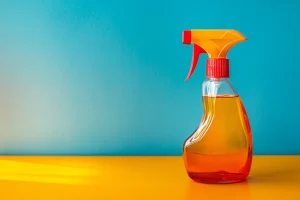 Alkaline cleaners also find applications in more specialized tasks:
Alkaline cleaners also find applications in more specialized tasks:
- Concrete Cleaners: Concrete surfaces, especially in garages or workshops, often suffer from oil and grease stains. Alkaline cleaners are highly effective for degreasing concrete because they can break down and emulsify these petroleum-based and organic contaminants, making them easier to rinse away. Formulations often contain detergents, surfactants, and alkaline builders tailored for this purpose. This contrasts with acidic cleaners, which are typically used on concrete for different purposes, such as removing mineral deposits (efflorescence) or etching the surface before sealing or coating.
- Paint Preparation (TSP): Trisodium phosphate (TSP) has a long-standing use in surface preparation before painting. When applied to previously painted walls, TSP effectively cleans away grease and grime. More importantly, it chemically ‘deglosses’ glossy or semi-gloss oil-based paints and opens the pores of latex-based paints. This creates a slightly roughened, more receptive surface profile, significantly improving the adhesion of the new coat of paint.
Across all these applications, a clear principle emerges: the strength and type of alkaline ingredient are carefully selected to match the specific cleaning challenge. Heavy, chemically resistant soils like baked-on oven grease or drain clogs necessitate the potent action of very strong alkalies like NaOH or KOH. General surface cleaning or glass cleaning, where milder soils and streak-free results are priorities, typically employs moderate or mild alkalies like ammonia.
Laundry requires a carefully balanced approach, using moderate alkalinity combined with builders to effectively remove diverse soils and manage water hardness without causing excessive damage to fabrics. This deliberate matching of chemical power to the task underscores the versatility and targeted effectiveness of alkaline cleaners.
V. Safety First! Handling Alkaline Cleaners with Care
While powerful, alkaline cleaners – especially the stronger ones – demand respect and careful handling. Their very ability to break down tough organic materials like grease and proteins means they can also damage biological tissues like skin, eyes, and the lining of the respiratory system. Understanding the risks and adhering to proper safety protocols is not just recommended, it’s crucial for preventing serious injury. Always prioritize safety when working with these products.
Know the Risks: Why Caution is Crucial
The primary hazard associated with alkaline cleaners stems directly from their alkalinity, particularly at higher pH levels. This property makes them corrosive. Corrosive substances can chemically burn, irritate, and destroy tissues upon contact. The severity increases significantly with higher pH and concentration. Key risks include:
- Severe Eye Damage: Contact with alkaline substances, especially strong ones like lye (NaOH, KOH), can cause immediate, severe irritation and chemical burns to the eyes. This can rapidly lead to permanent corneal damage and potentially blindness. Eye splashes are considered particularly serious hazards.
- Skin Burns: Direct skin contact with moderate to strong alkalies can cause irritation and chemical burns. Strong bases like NaOH and KOH can cause deep, penetrating burns that may appear soft and moist initially but are very painful and can lead to significant tissue damage and scarring if not treated immediately and properly.
- Respiratory Irritation: Inhaling dusts from solid alkaline powders (like lye or washing soda) or mists/aerosols from alkaline solutions can irritate the nose, throat, and respiratory tract, causing symptoms like coughing, choking, burning sensations, and shortness of breath. High concentrations can lead to more severe damage, including pulmonary edema (fluid build-up in the lungs), which is a medical emergency.
- Heat Generation: When solid, highly concentrated alkalies like NaOH or KOH are mixed with water, a significant amount of heat is released (exothermic reaction). If done improperly (e.g., adding water to the solid alkali, or adding too much solid at once), this heat can cause the solution to boil violently and splatter, creating a serious burn hazard.
It’s also important to be aware of less obvious dangers. For example, with ammonia, prolonged exposure at low concentrations can lead to olfactory fatigue, meaning the nose adapts and no longer detects the pungent warning odor, potentially leading to overexposure. Furthermore, the full extent of eye injury from an alkali splash may not become apparent for up to a week after the initial exposure.
Even dilute solutions of strong bases can cause irritation or damage if contact is prolonged. Lastly, mixing alkaline cleaners with incompatible chemicals can lead to hazardous reactions. The most notorious example is mixing ammonia with chlorine bleach, which produces toxic chloramine gas. Strong alkalies also react vigorously with acids, generating heat, and can react with certain metals like aluminum to produce flammable hydrogen gas.
Gear Up: Essential Personal Protective Equipment (PPE)
Given the risks, using appropriate Personal Protective Equipment (PPE) is non-negotiable when handling moderate to very strong alkaline cleaners. The level of protection needed scales with the hazard level of the product (check the label!). Essential PPE includes:
- Gloves: Wear chemical-resistant gloves. Materials like nitrile, neoprene, PVC, or rubber are often suitable, but always check the product’s Safety Data Sheet (SDS) or label for specific recommendations. Ensure gloves are intact and provide adequate coverage.
- Eye Protection: Protect your eyes diligently. Safety glasses with side shields offer minimum protection. For liquids or powders that can splash or create dust, splash-proof chemical goggles are strongly recommended. When working with highly corrosive liquids where splashing is a significant risk, a full face shield worn over goggles provides maximum protection. Contact lenses should generally not be worn when handling corrosive chemicals, as they can trap substances against the eye.
- Clothing: Wear clothing that covers exposed skin, such as long sleeves and pants. For tasks involving potential splashing or spills of strong alkalies, an impervious apron or chemical-resistant suit might be necessary. Remove contaminated clothing immediately and carefully to avoid spreading the chemical.
- Respiratory Protection: If working with powders that generate dust, or if spraying alkaline solutions (especially in enclosed spaces) creates mists or vapors, respiratory protection may be required. Use a respirator appropriate for the specific chemical and exposure level (e.g., a dust mask for nuisance dusts, or a cartridge respirator for vapors/mists), ensuring it fits properly.
Breathe Easy: The Importance of Good Ventilation
Always work in a well-ventilated area when using alkaline cleaners, particularly those with strong odors like ammonia, or any product that can generate dusts, mists, or vapors. Open windows and doors to ensure fresh air circulation. Using local exhaust ventilation (like a range hood when cleaning an oven, or an exhaust fan in a bathroom) can also help remove airborne contaminants. Adequate ventilation minimizes the inhalation risk.
Read Before You Use: Following Label Instructions
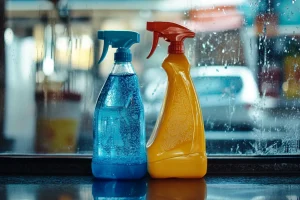 This cannot be stressed enough:
This cannot be stressed enough:
ALWAYS read and strictly follow the product label instructions and warnings before use.
Labels provide critical information specific to that product, including:
- Proper usage directions (e.g., dilution ratios, application methods)
- Specific PPE requirements
- Surface compatibility (what materials not to use it on)
- First aid procedures
- Storage instructions
- Warnings about incompatible chemicals
In Case of Accidents: Basic First Aid
Accidents can happen despite precautions. Knowing basic first aid steps is crucial, but always refer to the specific product label or SDS for detailed instructions. General guidelines include:
- Skin Contact: Immediately remove any contaminated clothing. Flush the affected skin area with large amounts of running water for an extended period – typically at least 15-30 minutes. Seek medical attention promptly, especially if burns are present or irritation persists.
- Eye Contact: Act instantly. Flush the eyes with copious amounts of clean, lukewarm water for at least 15-30 minutes. Hold the eyelids open to ensure water reaches all surfaces of the eye and lids. If wearing contact lenses, remove them immediately if possible without causing further injury. Seek immediate emergency medical attention.
- Inhalation: Move the exposed person to an area with fresh air immediately. If breathing is difficult or symptoms like coughing or shortness of breath occur, seek medical attention.
- Ingestion: Rinse the mouth thoroughly with water. Do NOT induce vomiting, as this can cause the corrosive substance to burn the esophagus again on the way up. Seek immediate emergency medical attention.
Thinking Green: Environmental Impacts to Consider
Beyond personal safety, the environmental effects of alkaline cleaners are also a consideration:
- Phosphates (TSP): The most significant environmental issue historically linked to alkaline cleaners is the impact of phosphates, primarily from TSP used in detergents. When phosphates enter lakes, rivers, and streams (often via wastewater), they act as fertilizers, causing excessive growth of algae and aquatic plants – a process called eutrophication. These algal blooms consume oxygen in the water when they die and decompose, harming fish and other aquatic life. This severe environmental impact led to widespread regulations restricting or banning phosphates in many consumer cleaning products.
- pH Effects: Spills of large quantities of strong alkaline solutions can temporarily but significantly increase the pH of soil or water bodies. If the ecosystem lacks sufficient natural buffering capacity, this sudden shift in pH can be harmful or lethal to sensitive plants, aquatic organisms, and soil bacteria. However, these effects are usually localized and diminish as the alkali is diluted, neutralized by environmental acids, or reacts with minerals like carbon dioxide.
- Biodegradability: Simple inorganic alkalies like NaOH and KOH do not biodegrade in the way organic compounds do (i.e., broken down by microbes). They simply dissociate into their respective ions (e.g., Na+ and OH−) in water. Their primary environmental impact relates to their potential to alter pH and their inherent corrosivity/toxicity at high concentrations, rather than persistence or bioaccumulation in the typical sense.
The level of safety precaution required when using alkaline cleaners is directly proportional to the strength (indicated by pH) and concentration of the product. Mild alkalies like baking soda pose minimal risk and require basic common sense. Moderate alkalies like ammonia or washing soda warrant caution, particularly regarding ventilation and skin/eye contact.
Strong and very strong alkalies like TSP, sodium metasilicate, NaOH, and KOH demand rigorous adherence to comprehensive safety protocols, including appropriate PPE and careful handling procedures, due to their severe corrosive potential. Always err on the side of caution when dealing with unknown or highly alkaline products.
VI. DIY vs. Pro: When to Call for Professional Cleaning Help
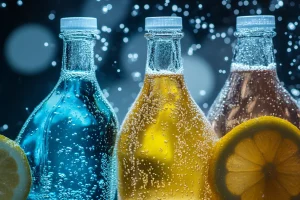 While many routine cleaning tasks can be managed effectively and safely using readily available household products and a bit of effort, there are definitely situations where stepping back and calling in professional cleaners is the smarter, safer, and ultimately more effective approach. This is particularly true when facing cleaning challenges that involve potentially hazardous chemicals, require specialized equipment, or deal with deeply ingrained dirt or damage.
While many routine cleaning tasks can be managed effectively and safely using readily available household products and a bit of effort, there are definitely situations where stepping back and calling in professional cleaners is the smarter, safer, and ultimately more effective approach. This is particularly true when facing cleaning challenges that involve potentially hazardous chemicals, require specialized equipment, or deal with deeply ingrained dirt or damage.
Why Sometimes the Experts Are Needed
Opting for professional cleaning services offers several advantages, especially when dealing with tasks that push the limits of DIY capabilities or safety:
- Handling Strong Chemicals Safely: As detailed earlier, strong alkaline cleaners (like concentrated lye in oven or drain cleaners) and other potent cleaning agents (specialized solvents, strong acids, disinfectants) pose significant risks if mishandled. Professional cleaners are trained in the proper and safe use of these industrial-strength chemicals. They possess the knowledge regarding handling procedures, appropriate dilutions, surface compatibility, and, critically, they have access to and use the correct industrial-grade PPE (gloves, respirators, eye protection) designed for these hazards. This expertise drastically minimizes the risk of chemical burns, respiratory issues, or accidental damage associated with using potent cleaning agents. For homeowners who need heavy-duty cleaning but are understandably hesitant or unable to safely manage hazardous materials like concentrated NaOH or KOH, hiring professionals provides a crucial safety bridge.
- Expertise and Experience: Professional cleaners bring a wealth of knowledge accumulated through training and on-the-job experience. They understand the nuances of cleaning different types of surfaces (carpet fibers, upholstery fabrics, natural stone, wood finishes) and identifying various types of stains and soils. They know which cleaning methods and products are most effective for specific problems and, just as importantly, which ones could cause irreversible damage (e.g., using the wrong chemical on a sensitive fabric or stone).
- Specialized Equipment: Professional cleaning companies invest in commercial-grade equipment that far surpasses the capabilities of typical household tools. This includes high-powered hot water extraction machines for deep carpet and upholstery cleaning, powerful vacuums with HEPA filtration to capture fine dust and allergens, floor buffers, steam cleaners, and air duct cleaning systems. This advanced equipment allows them to remove deeply embedded dirt, allergens, bacteria, and residues that standard vacuum cleaners, mops, or retail rental machines simply cannot reach, leading to a demonstrably higher level of cleanliness.
- Stubborn Problems: Some cleaning challenges are notoriously difficult for DIY methods. Deep-set stains (like pet accidents, red wine, or ink), persistent odors embedded in carpets or upholstery, heavy build-up of grease (like in commercial kitchens or severely neglected ovens), extensive mold growth, or the fine, pervasive dust left after construction or remodeling often require the specialized techniques, potent (but properly used) chemicals, and powerful equipment that professionals employ. There’s often an effectiveness threshold where DIY efforts plateau, and professional intervention is needed to achieve satisfactory results.
Situations That Warrant a Professional Touch
Consider calling for professional help in these common scenarios:
- Deep Cleaning Needs: For thorough, periodic deep cleaning of carpets, area rugs, upholstery, mattresses, or air ducts, especially to remove accumulated dirt, allergens, and potential contaminants. Experts recommend professional carpet cleaning every 6-18 months depending on household traffic and occupants.
- Hazardous Chemical Use: Any cleaning task requiring the use of very strong alkalies, acids, potent solvents, or specialized disinfectants where safe handling is paramount.
- Post-Construction/Renovation Cleanup: The fine dust generated during building or remodeling projects settles everywhere and can be difficult to remove completely with household tools. Professionals have the equipment (especially HEPA vacuums) and techniques to thoroughly clean surfaces and air ducts.
- Move-In / Move-Out Cleaning: Ensuring a property is thoroughly cleaned and sanitized before moving in or after moving out, often required for rental agreements or property sales.
- Allergy or Asthma Concerns: Households with individuals suffering from allergies or respiratory issues benefit significantly from professional deep cleaning that focuses on removing dust mites, pet dander, pollen, mold spores, and other allergens from carpets, upholstery, and air systems.
- Stubborn Stains and Odors: When DIY treatments fail to remove persistent stains or eliminate unpleasant odors (e.g., pet urine, smoke).
- Lack of Time or Ability: For busy households or individuals who lack the time, energy, or physical capability to perform demanding or extensive cleaning tasks.
- Special Events: Preparing a home for a major event, party, or gathering where a pristine appearance is desired.
The Benefits of Hiring a Cleaning Service
Beyond tackling tough jobs, hiring professionals offers broader advantages:
- Superior Results: Professionals consistently achieve a deeper, more thorough level of cleanliness and hygiene compared to typical DIY efforts.
- Healthier Home Environment: Effective removal of allergens, dust, bacteria, viruses, and other pathogens contributes to better indoor air quality and a healthier living space.
- Time Savings: Outsourcing cleaning frees up significant amounts of personal time that can be devoted to work, family, hobbies, or relaxation.
- Stress Reduction: Eliminates the physical burden and mental stress associated with cleaning chores, providing peace of mind that the job is done correctly and safely.
- Protection of Assets: Proper, professional cleaning techniques can extend the lifespan and maintain the appearance of expensive assets like carpets, upholstery, flooring, and appliances.
- Customized Services: Many professional services allow clients to tailor the cleaning plan to their specific needs and budget, focusing on particular areas or tasks.
- Eco-Friendly Options: Many professional companies now offer green cleaning services using environmentally friendly products and methods, addressing concerns about harsh chemicals.
VII. 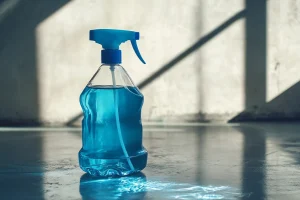 Final Thougths
Final Thougths
Alkaline cleaners represent a powerful category of cleaning agents, indispensable for tackling organic soils like grease, oils, fats, and proteins. Their effectiveness stems from their chemical nature – a pH above 7 and an abundance of hydroxide ions – which enables them to break down these stubborn substances through processes like saponification and emulsification.
From mild baking soda for light tasks to moderate ammonia for streak-free shine, and from strong washing soda for laundry to extremely potent lye for clogged drains and baked-on oven grime, the strength of the alkali is carefully matched to the cleaning challenge.
However, this cleaning power, especially at the higher end of the pH scale, comes with significant safety considerations. Strong and very strong alkalies are corrosive and can cause severe damage to skin, eyes, and the respiratory system. Understanding these risks, diligently using appropriate Personal Protective Equipment (PPE), ensuring good ventilation, and meticulously following label instructions are paramount for safe use. Environmental impacts, particularly the eutrophication caused by phosphates like TSP, have also led to changes in formulations and regulations.
While DIY cleaning with milder alkaline products is feasible for many everyday tasks, the risks associated with handling strong, corrosive alkalies, coupled with the limitations of household equipment for deep cleaning or tackling stubborn problems, highlight the value of professional cleaning services.
Professionals offer the expertise, specialized equipment, and knowledge of safe chemical handling necessary to achieve superior results, protect household assets, and ensure a healthier living environment, particularly when dealing with hazardous materials or deeply ingrained dirt and allergens. Understanding the capabilities and limitations of both DIY methods and professional services allows consumers to make informed decisions for maintaining a clean and safe home.

